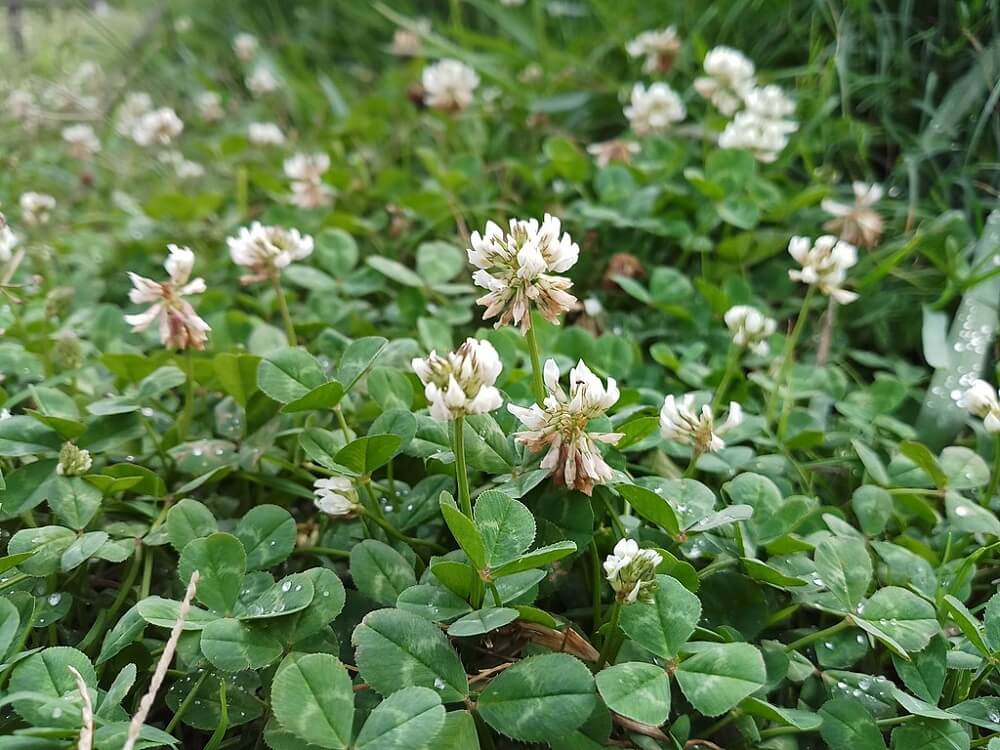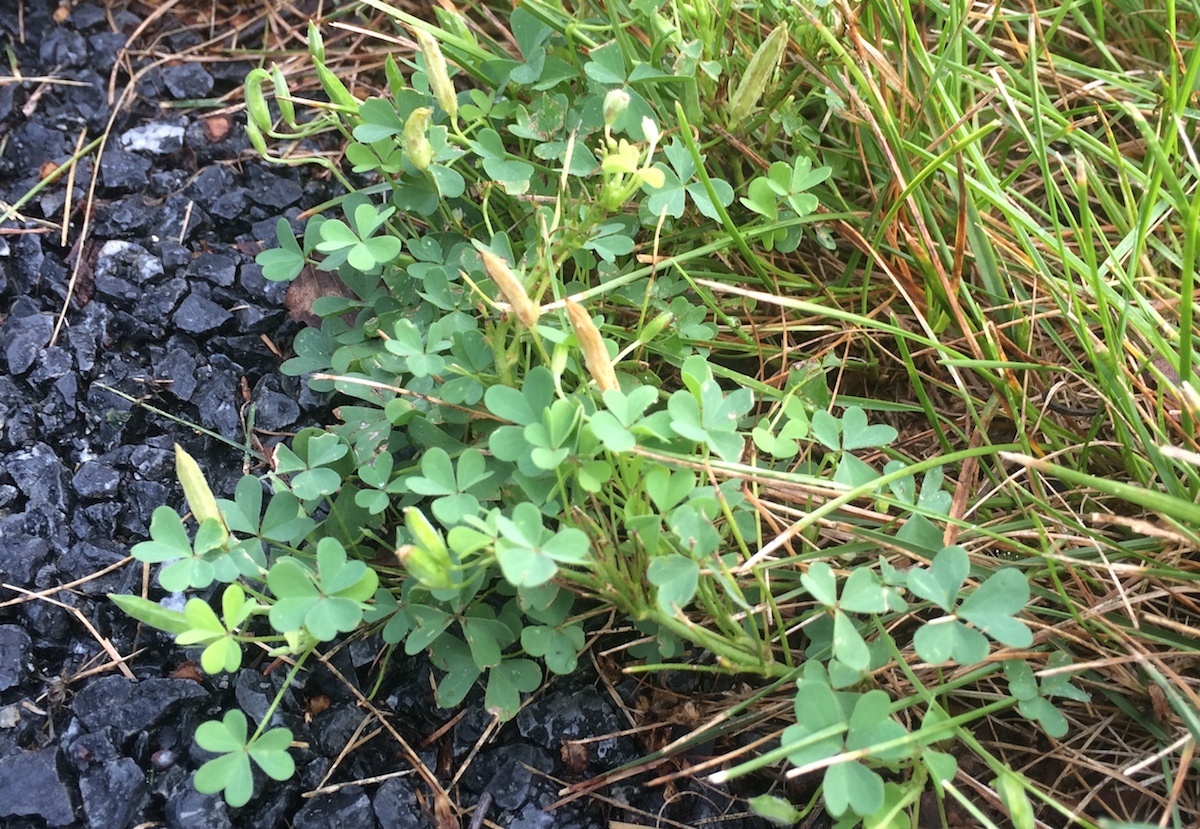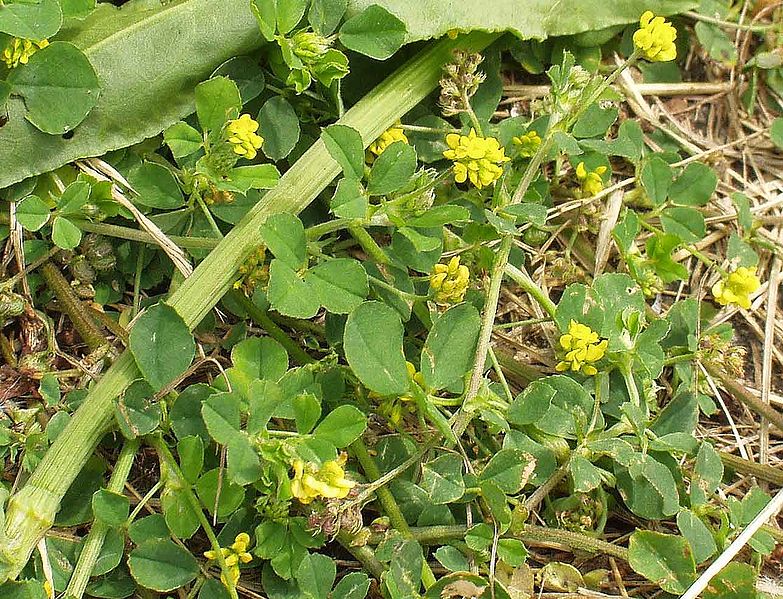Among the nuisance weeds that are common, there’s no question that clover is among the most annoying. This member of the legume family is a perennial weed that can easily make a groomed lawn start to look “messy.”
Due to its fast-spreading nature, clover can take over a lawn seemingly overnight. This can be frustrating as large patches of clover can crowd out desired turfgrasses and leave an empty spot when it dies off later in the season.
Video: How to Get Rid of Lawn Weeds
If you think there’s clover growing in your lawn, then you’re likely looking for solutions.
But it’s important to recognize that there are clover lookalike weeds that are often misidentified by homeowners as clover—specifically, Oxalis (also called yellow woodsorrel) and Black Medic. We’ll talk about all 3 weeds and what to do about them.
White Clover
When homeowners call us and say there is clover in my lawn, oftentimes, they are right. White Clover is in fact a very common weed and to the sheer frustration of many, is found throughout many lawns.
It prefers soils with a low pH, which is an environment not best-suited for grass to thrive. It has a shallow root system and will spread most quickly in areas where turf is thinned out and it doesn’t have to compete with healthy grass to survive.

Clover can be quite fast-growing which is why it’s important to get a handle on it quickly. After all, besides being considered unattractive by most homeowners, White Clover also has the added nuisance of attracting bees to the yard when it’s in bloom during the summer.
Fortunately, clover can be relatively easy to control with selective, liquid broadleaf weed control. If your case is severe, it may require several treatments throughout the year.
Oxalis
This low-growing summer lawn weed is often mistaken for clover due to their similarly shaped leaves. However, this perennial weed produces yellow flowers and mature plants take on a burgundy leaf color as it spreads.
It can thrive in both shade and sun. This nuisance weed is a prolific seeder and can easily take over a healthy lawn and even creep into landscape beds.

Unfortunately, it is also one of the most difficult-to-control broadleaf weeds in average lawns. It may take repeated efforts, sometimes for a number of years, to get rid of this weed.
Spraying Oxalis with broadleaf weed control upon its emergence throughout the year is the only plan of attack that is effective.
Black Medic
This broadleaf summer weed is also frequently confused with clover but even moreso with Oxalis. That’s because both have heart-shaped leaves and yellow flowers.
The identifying difference is that the leaf stem of Black Medic’s center is slightly longer. As Black Medic’s yellow flowers mature over time, they form a black seedpod which is where this weed gets its name.

Black Medic can be controlled by spot-treating areas with broadleaf weed control during the summer months. It has less of a potential of spreading than Oxalis, but it’s still a tough weed that you’ll want to address in the summer.
Killing Clover in Your Lawn
Whether you do in fact have White Clover or you actually have another weed, such as Black Medic or Oxalis, your goal is the same. You want to get rid of weeds so that you can truly enjoy your lawn.
Since some weeds are harder to control than others, it’s important to work with a lawn care company that will execute a variety of weed control tricks. After all, even when weeds look alike, they may require a completely different approach.
Beyond the professional application of commercial grade weed control products (customized to the weeds that you’re dealing with), you also want to work with a lawn care company that has other services to offer. A soil test can be particularly helpful considering the fact that clover tends to thrive in a low soil pH environment.
Making the necessary limestone treatments to correct soil pH over time will also help promote an environment that is more helpful for grass to thrive. In addition, focusing on improving the overall fertility of your soil will also help.
Since clover and other weeds often thrive best in thin lawns, nothing crowds out their growth like healthy, thick grass. This can be accomplished with good lawn care practices such as aeration and overseeding and proper fertilization.
Say Goodbye to Weed Worries
If you’re tired of searching online for answers to how to get rid of clover and instead ready to just hand those worries over to a pro, then now is the time.
Why waste anymore of your valuable time trying to get to the bottom of what weeds you’re dealing with or how to address them when you can have a professional not only identify those weeds for you but know exactly what to do about them.
By working with a lawn care professional, you can finally say goodbye to weed worries. Whether it’s White Clover or some other weedy invader, you can let a well-trained and knowledgeable pro handle it and you can feel confident that your weed problem will finally be under control.
With the right care for your lawn, you’ll gain valuable peace of mind. If you’re interested in having your lawn inspected and its health assured, contact us for a free quote or give us a call at 833-JTE-TREE.
Image Sources: white clover, white clover 2, black medic





